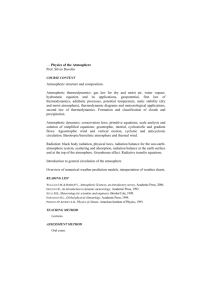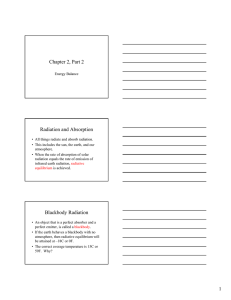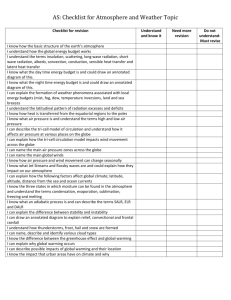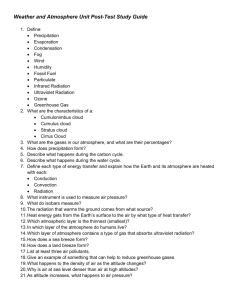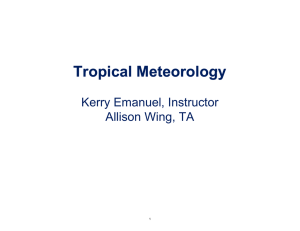MET 2203 Physical meteorology
advertisement
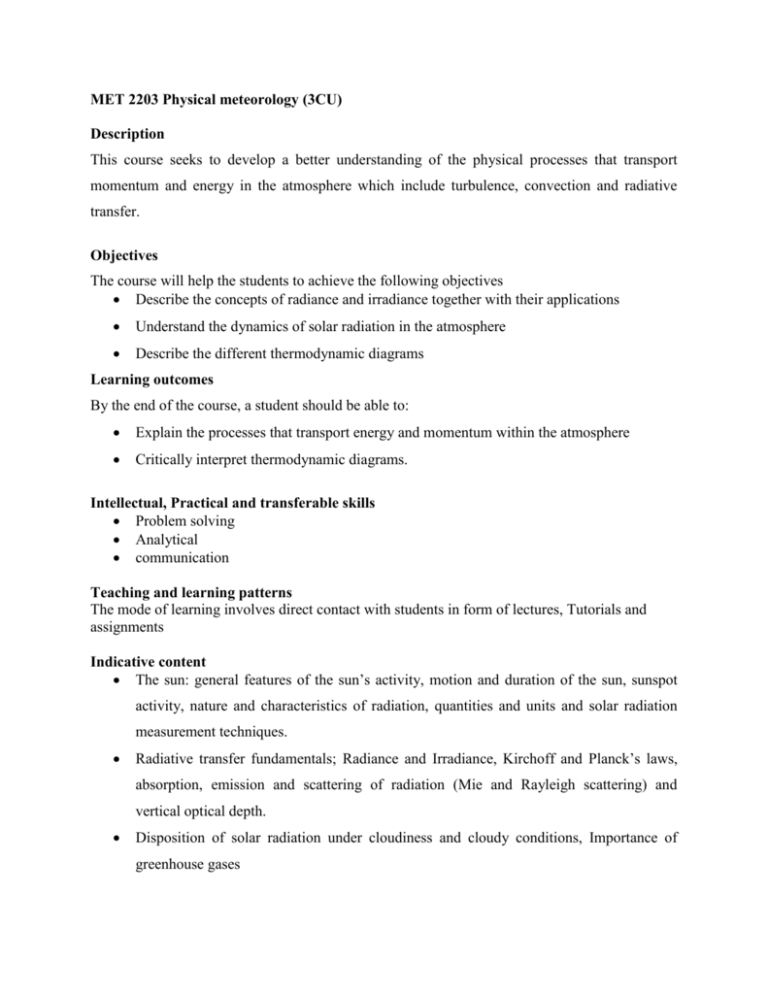
MET 2203 Physical meteorology (3CU) Description This course seeks to develop a better understanding of the physical processes that transport momentum and energy in the atmosphere which include turbulence, convection and radiative transfer. Objectives The course will help the students to achieve the following objectives Describe the concepts of radiance and irradiance together with their applications Understand the dynamics of solar radiation in the atmosphere Describe the different thermodynamic diagrams Learning outcomes By the end of the course, a student should be able to: Explain the processes that transport energy and momentum within the atmosphere Critically interpret thermodynamic diagrams. Intellectual, Practical and transferable skills Problem solving Analytical communication Teaching and learning patterns The mode of learning involves direct contact with students in form of lectures, Tutorials and assignments Indicative content The sun: general features of the sun’s activity, motion and duration of the sun, sunspot activity, nature and characteristics of radiation, quantities and units and solar radiation measurement techniques. Radiative transfer fundamentals; Radiance and Irradiance, Kirchoff and Planck’s laws, absorption, emission and scattering of radiation (Mie and Rayleigh scattering) and vertical optical depth. Disposition of solar radiation under cloudiness and cloudy conditions, Importance of greenhouse gases Heat transfer processes at the ground, maximum and minimum temperature forecasting using empirical, Brunt and Groen formulae. Thermodynamic Diagrams; emagram, tephigram and skew-T Log P diagram, interpretation and their application in terms of stability, inversions, lifting condensation levels, convective condensation level and tropopause level, wet-bulb temperature. Convective available energy and convective inhibition. Assessment Method The assessment method is structured to include course work, and final examination. Course work consists of assignments, reports and tests and accounts for 30% of the final grade. The final examination will account for 70% of the final grading Core Reference materials George J. Haltiner and Frank L. Martin (1957): Dynamical and Physical Meteorology, New York, McGraw-Hill Gary E. Thomas and Knut Stamnes (1999): Radiative transfer in the atmosphere and Ocean, Cambridge University Press. Seymour L. Hess (1979): Introduction to Theoretical Meteorology, R.E. Krieger Pub. Co.
